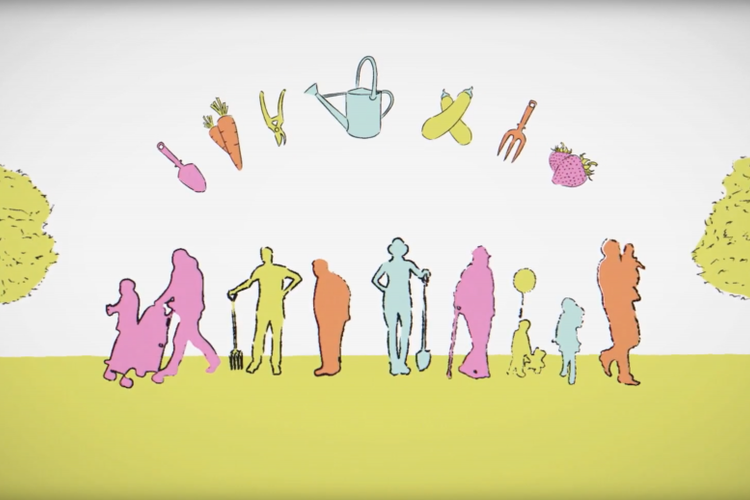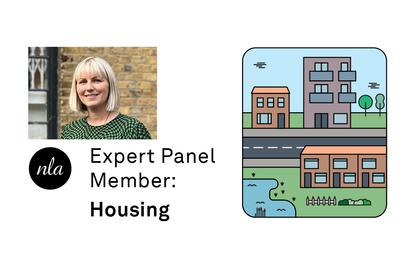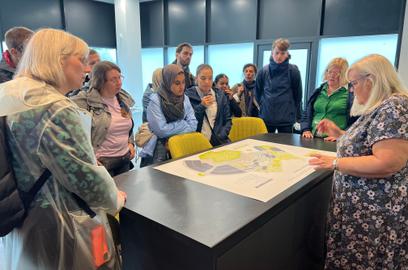A Design Code for Healthier Living

Northstowe is a new town in Cambridgeshire, promoted by Gallagher and Homes and Communities Agency (HCA). It will be the home of around 25,000 people and is one of the NHS’s Healthy New Towns (HNT). The objectives of this programme are to go beyond existing good practice and develop new and creative approaches that offer the potential to contribute to healthier places. It is also to drive closer collaboration between local authorities, planners, developers and the NHS.
Northstowe HNT specifically focuses on the health and wellbeing objective around reducing obesity and the wellbeing of older people. The aim is to help people to make healthy choices via environmental change.
The Design Code for Phase 2 is an important bridge between the outline planning consent and detailed proposals for Northstowe. It is an appropriate forum for embedding principles of healthy neighbourhoods. The final document demonstrates how these objectives can be embedded in design requirements at a strategic as well as detailed level.
At a first glance, the principles of promoting healthy and active lifestyles appear to be already embedded in a best practice masterplanning approach, such as access to green infrastructure and routes for walking and cycling. Research has shown that key influences on increased activity are the development density, permeability, access to public transport and increased number of parks. The Design Code for Northstowe Phase 2 demonstrates that a focus on health and wellbeing can enhance masterplanning practice and take it a step further towards delivering healthy places.
Density – A Walkable Neighbourhood
Phase 2 has a higher than average density between 40-70 u/ha. Of the 3500 new homes, none will be further away than 12 minutes walking and 2 minutes cycling distance from the centre, schools and stops of the guided bus. Higher densities relying on terrace housing and urban typologies of family housing create active and animated streets. Together with a variety of green-ways and open spaces that will create a varied and attractive environment. A choice of attractive routes, higher densities and variation in character help to deliver streets and spaces that are safe and interesting to walk along. The routes through attractive landscaped areas will be lined with regular seating opportunities to allow resting points for the elderly and those with disabilities.
Cycling
Northstowe Phase 2 will have a fine grain of dedicated cycle routes. In total 15 km of dedicates cycle routes. These routes vary and offer a choice. Allowing the seasoned commuter to cycle at pace and connect to strategic routes that lead to local employment hubs, such as Cambridge and Huntingdon as well as accommodate less confident cyclists to travel along car free greenways to local schools and the town centre. On Primary and Secondary Streets, cycle lanes are segregated and given priority at intersections and junctions.
Cycle parking requirements address the need for non-standard bikes, such as dutch style loading bikes and child carriers. Apart from cycle storage within individual houses, the code promotes communal bike stores with bike repair stations to encourage community interaction. For the less able and elderly, every house or block of flat will have a charging point for electric bikes and mobility scooters.
The Detail
Public toilets and drinking fountains help people with a range of health conditions, including obesity and diabetes. In order to maintain healthy hydration the Design Code requires drinking fountains to be located adjacent to play areas and alongside key walking routes, the sports hub and within the town centre.
Public toilets and adult and baby changing facilities, are also a mandatory requirement in central locations. The lack of public toilets in our environment has been highlighted by many studies as it increases the risks of loneliness and isolation for fear of going out. This is particularly prevalent in the older generations.
Community Allotments and Orchards
Historically, allotments were established to encourage healthier lifestyles in the working population. The benefits of allotments identified more than 200 years ago still apply:
- Gentle outdoor activity;
- Increased sense of community and be-longing; and
- Healthy, fresh produce.
The Design Code identifies the requirement for allotments and promotes edible landscapes. Each of which is easily accessible by bike. Clusters of community orchards are distributed throughout the whole of Phase 2.
A Green Environment
Despite the relatively high densities Northstowe Phase 2 will become an urban environment that is infused with greenery. A network of Greenways connects residents to large open spaces, including the Water Park and an area of natural green space called Paddocks Parkland. Taking inspiration from the existing avenues the majority of streets will be line with trees in order to improve the air quality, micro climate and provide an at-tractive walking and cycling environment. The detailed testing of the code has shown that the Design Code sets out the requirements for around 3000 trees, many of them located along the Primary and Secondary Street but also throughout the residential environments.
Delivery Process
The Design Code has been developed in collaboration with the District and County Council as well as the nearby communities. Professional bodies, such as Cambridge University’s Institute of Public Health and local interest groups such as cycling groups have commented and influenced the code.
Strategic decisions are key to the successful delivery of healthier places. Northstowe Phase 2 benefits from decisions that were taken a long time ago. The fact that Northstowe was conceived as a stand alone new town of significant size ensured that essential infrastructure such as the guided busway and strategic cycle links were delivered early. The scale of the town also enables the town centre to be distinct in terms of its character, scale and mix of uses. So that is has the potential to become a real and vibrant centre for this new Market Town.
Adoption remains a critical issue which could still undermine the aspirations for green and attractive public realm. At the time of writing discussions with Cambridgeshire County Council continue. The HCA has made a commitment to quality and is investigating alternative management structures, including Community Land Trusts and the use of management companies.
Katja Stille is an Associate at Tibbalds Planning and Urban Design.
Related Updates

Lizzie Le Mare speaking at the Housing Finance Conference 2025

Tibbalds

Lizzie Le Mare joins NLA Expert Panel

Tibbalds
Stay In Touch
Sign up to our Newsletter
Subscribe to our newsletter to receive updates about making people friendly places.


